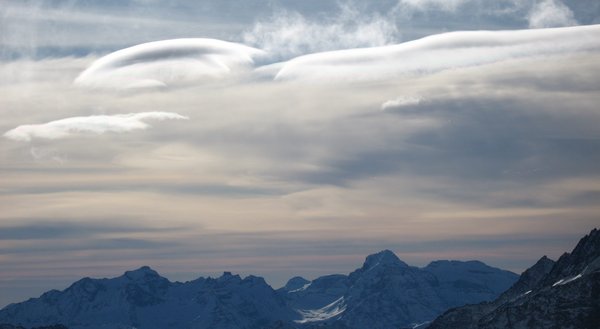
© Stephan Mertes


© Stephan Mertes
A pure, free floating cloud droplet does not freeze at 0°C but only at roughtly -38°C. The reason for this is an energy barrier which must be overcome to form the first ice (nucleation) before the drop can freeze. Some of the atmospheric aerosol particles, called INP (Ice Nucleating Particles), can act as catalysts to lower this energy barrier, thereby increasing the freezing temperature of the droplets. The size, chemical composition and surface texture of the INP play a crucial role.
If an INP is contained in a cloud droplet, freezing of the droplet can be induced well above -38°C. We have investigated aerosol particles, as they occur in the atmosphere, in the laboratory to determine whether and at what temperature they function as INPs. It has been shown that certain proteins of bacteria trigger the freezing of supercooled droplets at a temperature just below 0°C. Mineral dust particles, which contain potassium feldspar, lead to droplet freezing below -20°C. We measure the concentrations of such INPs in the atmosphere worldwide. In the near future, we also want to investigate in the laboratory whether and how turbulence, as it can occur in the atmosphere, additionally influences the freezing of cloud droplets.
Once a droplet freezes, it becomes an ice particle and can grow into an ice crystal in a supersaturated environment. We have investigated this ice particle growth in the laboratory. Ice particles can grow not only because water vapour is deposited, but also, for example, by collision with supercooled cloud drops (sleet, hail). During this growth process, ice particles can also multiply, which is a process we are currently examining in the laboratory. We are also collecting ice particles from real clouds in order to investigate which aerosol particles they contain, which allows conclusions to be drawn about the formation mechanisms and the original INP of the ice particles.
Here again the links to our research topics:
Laboratory experiments concerning immersion freezing
Atmospheric concentrations of ice nucleating particles (INP)
Laboratory experiments concerning ice-particle growth
Secondary ice formation in the laboratory
Characterization of ice particle residuals in atmospheric clouds